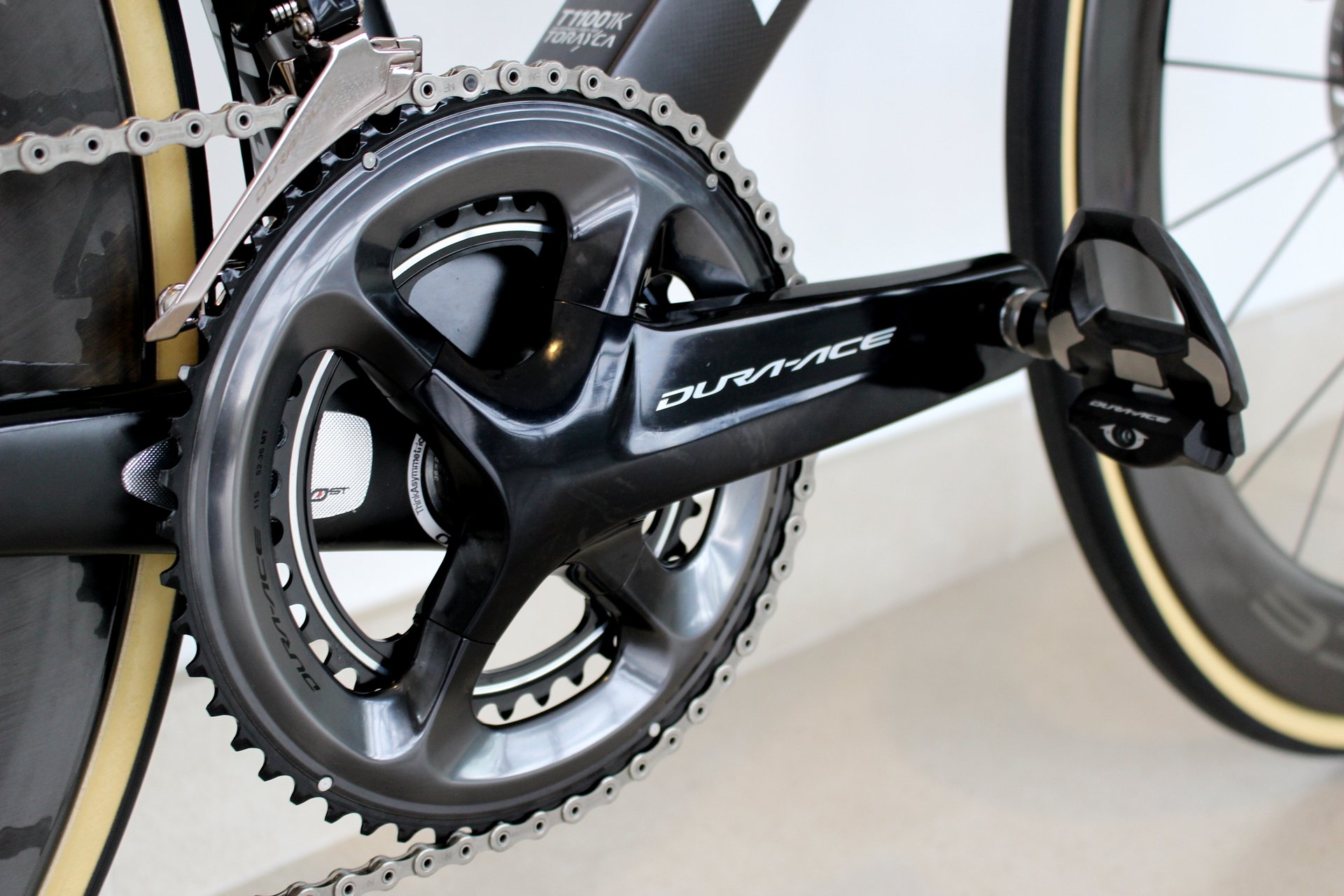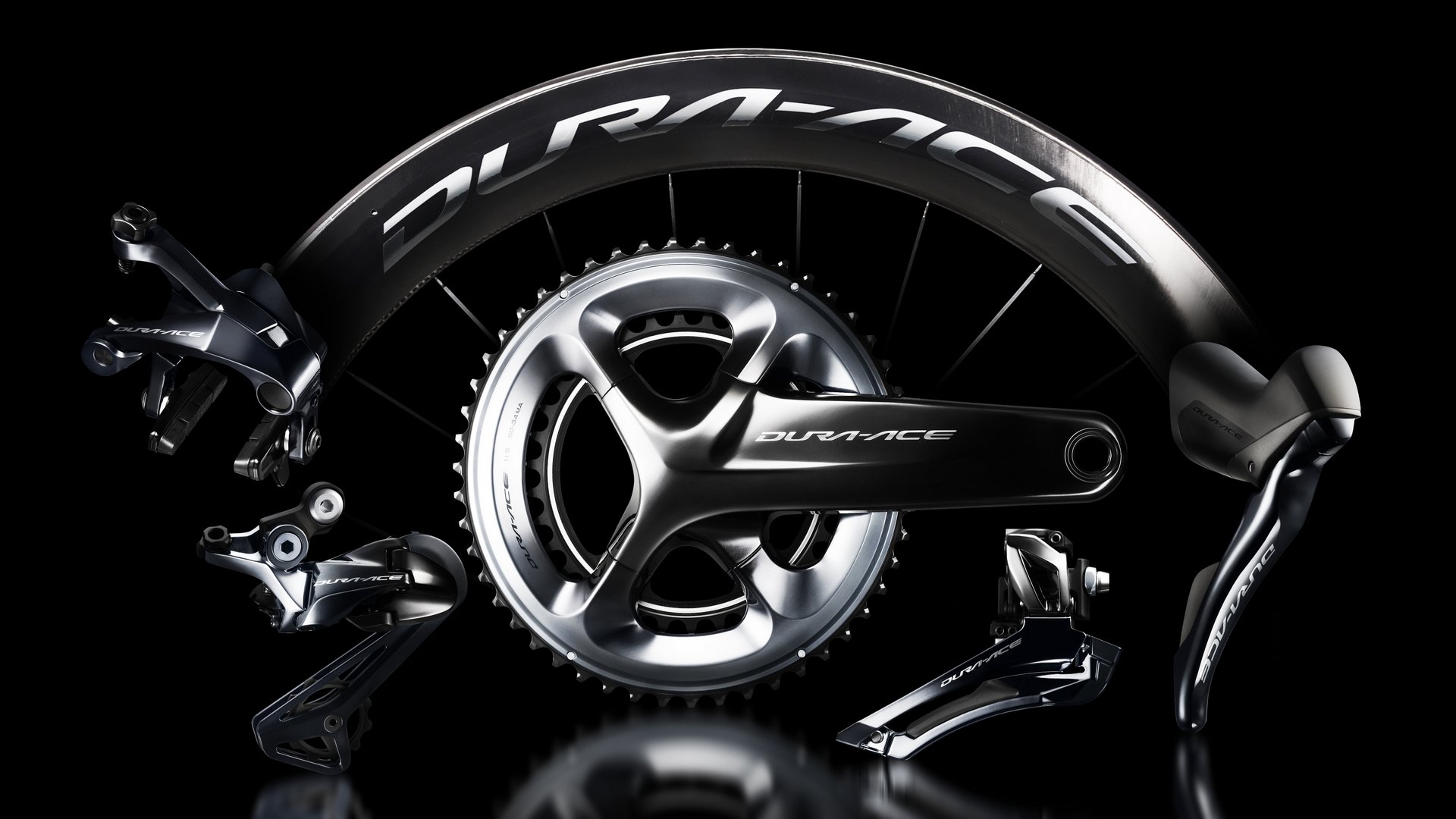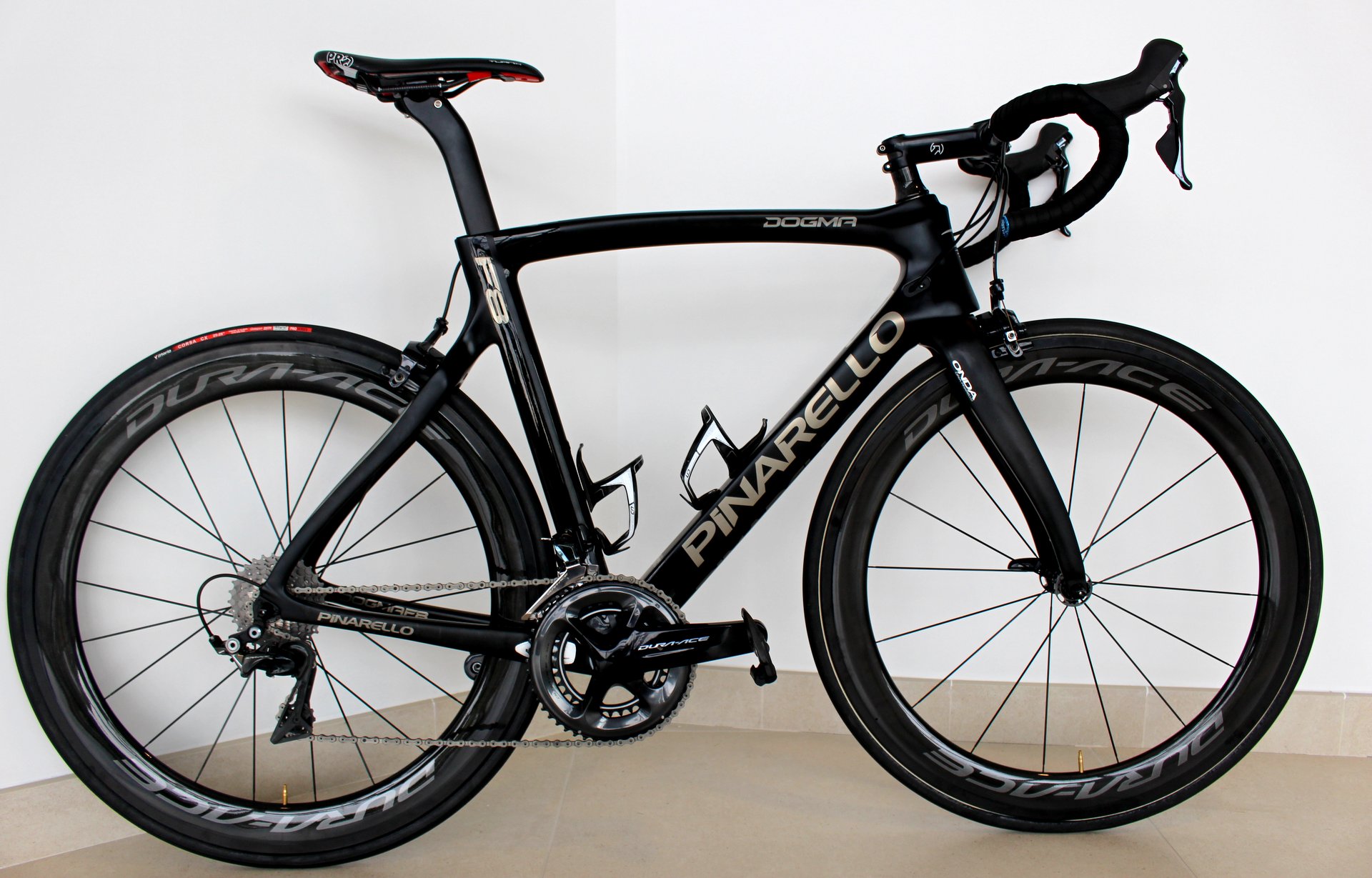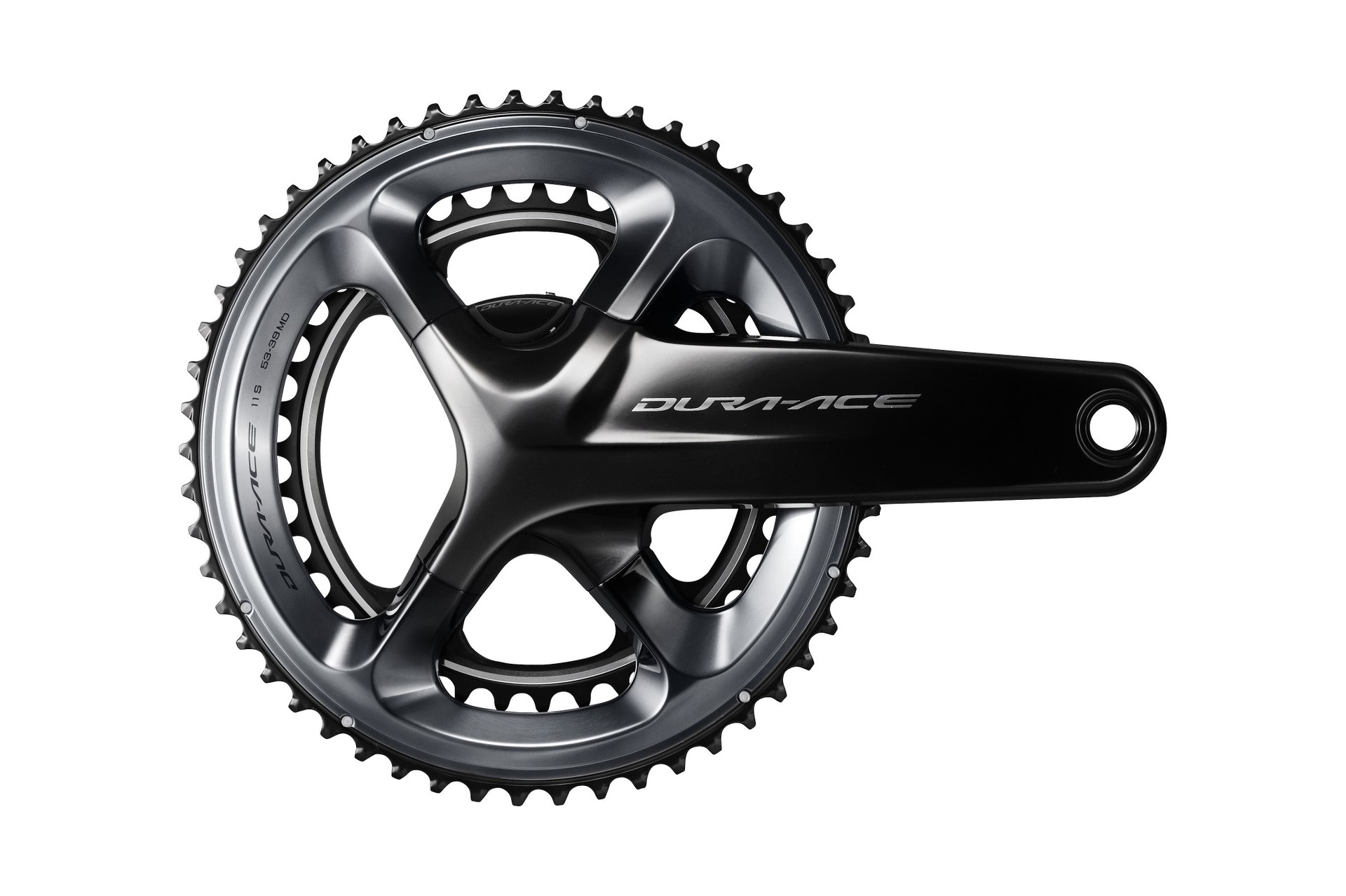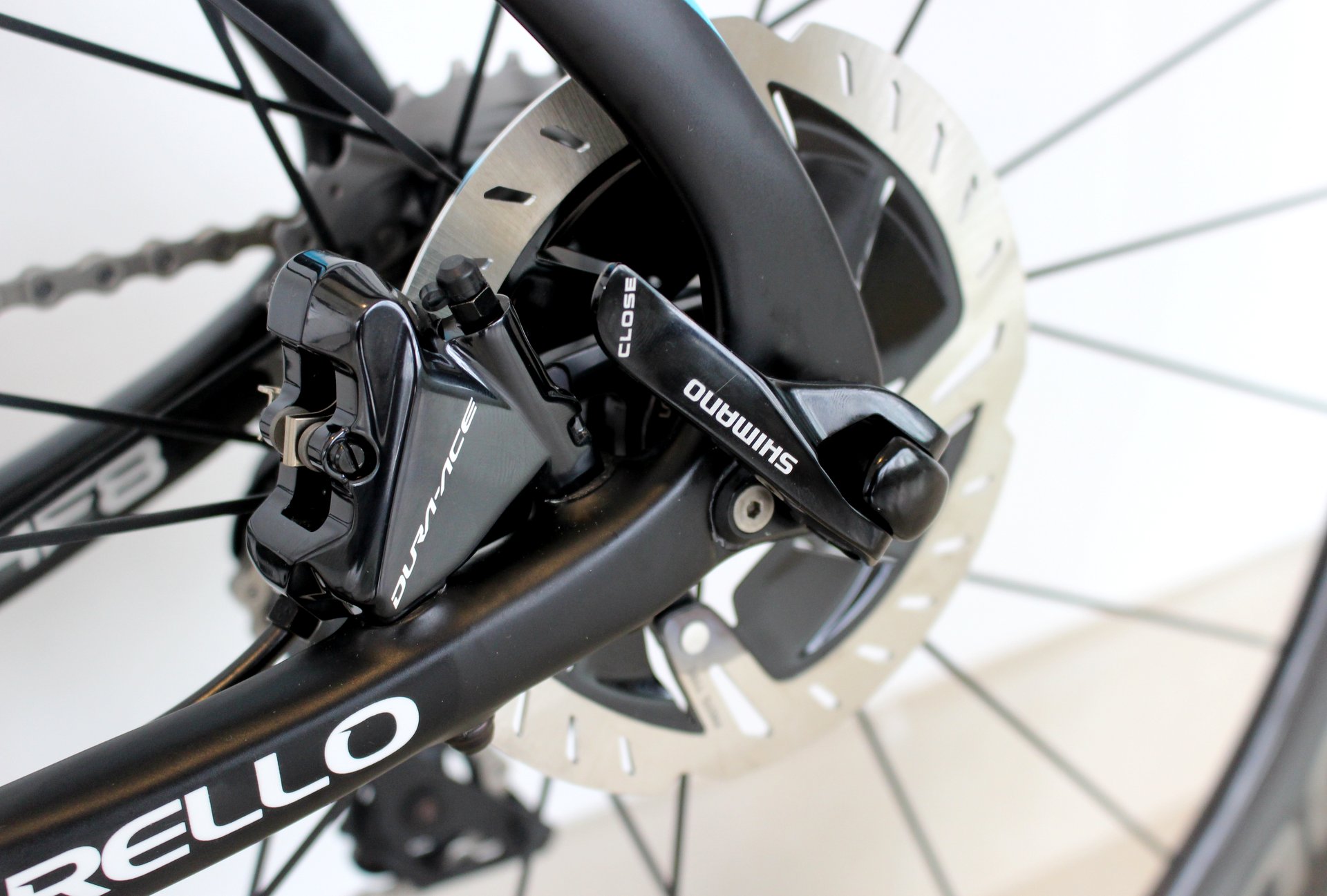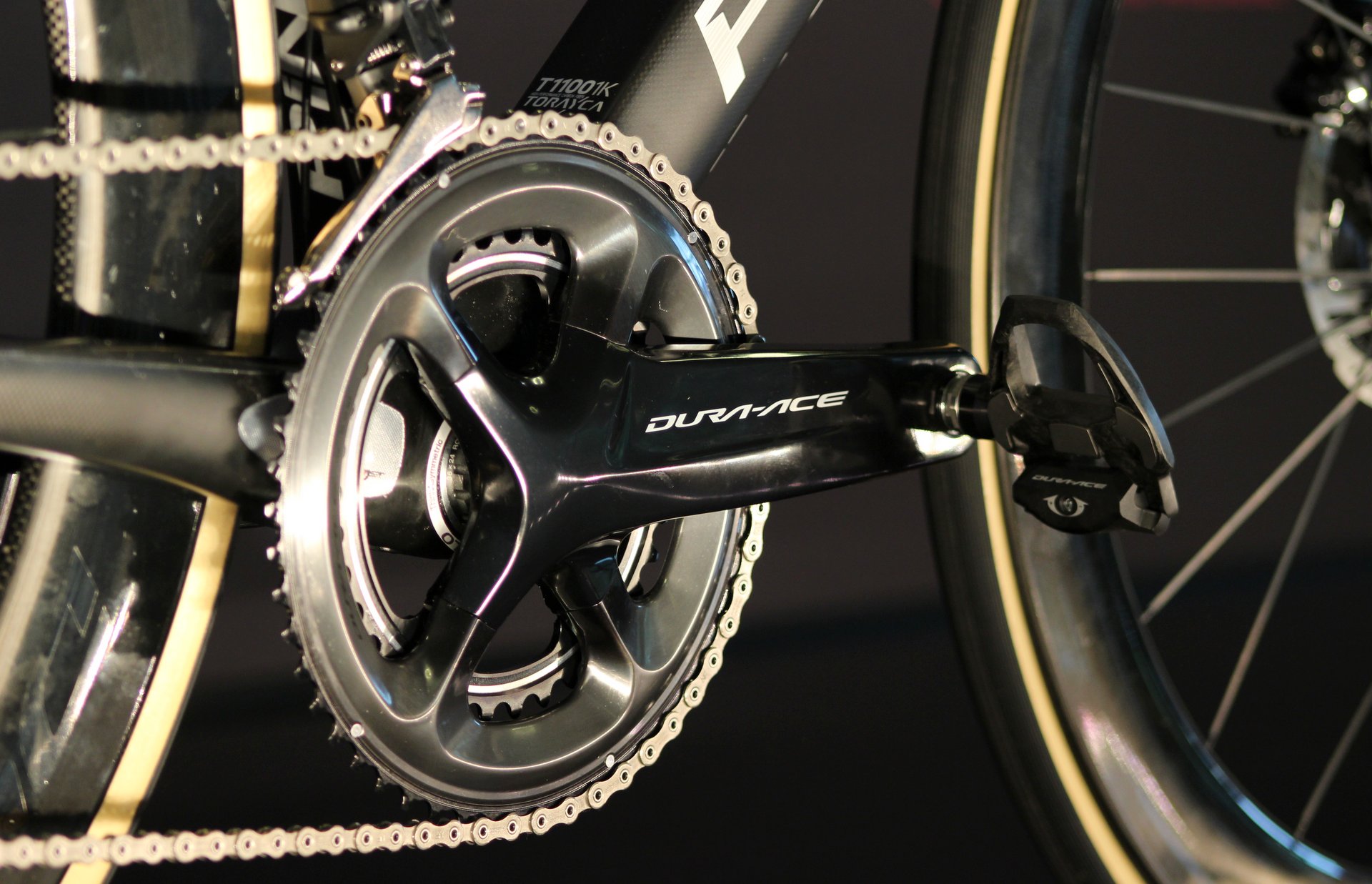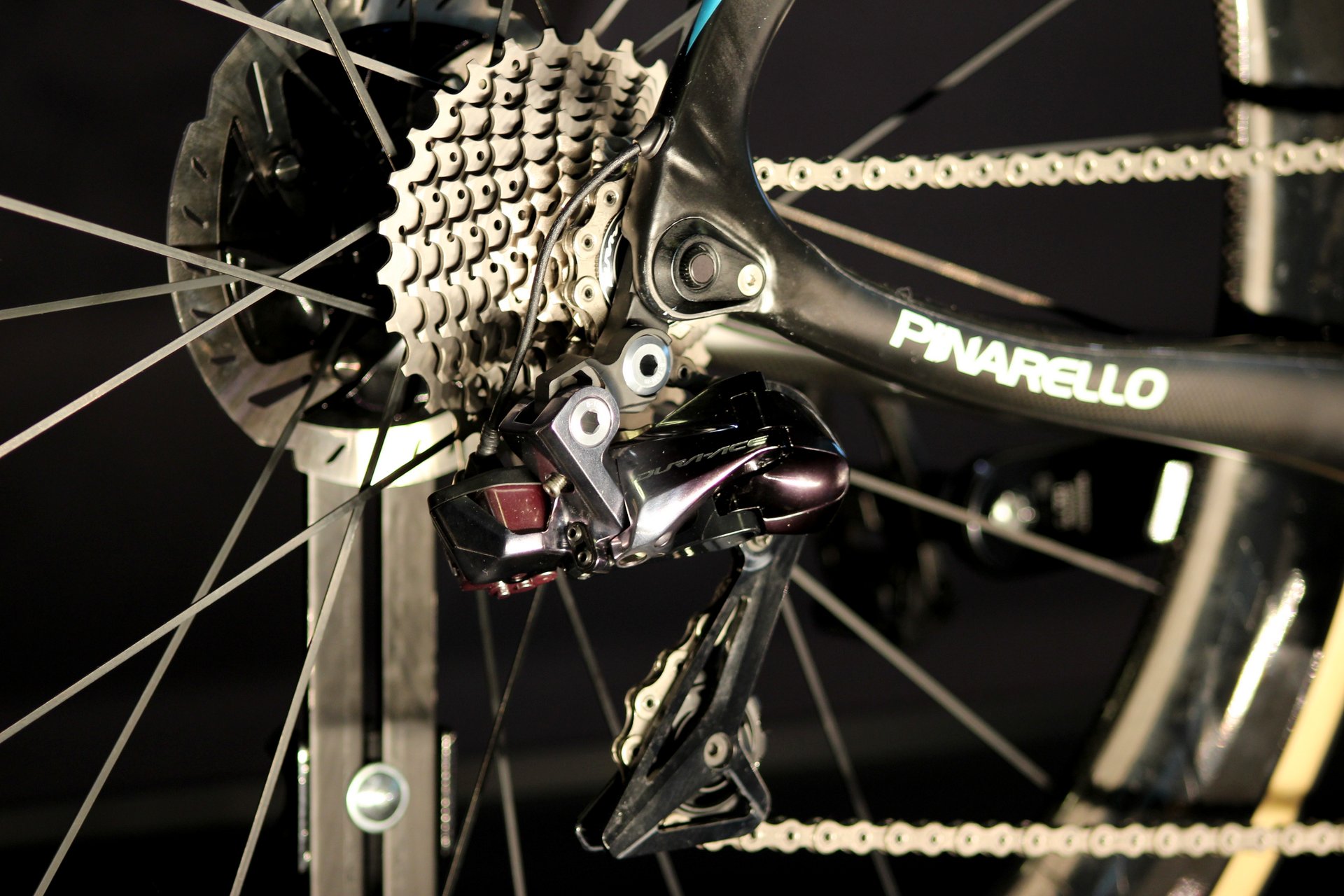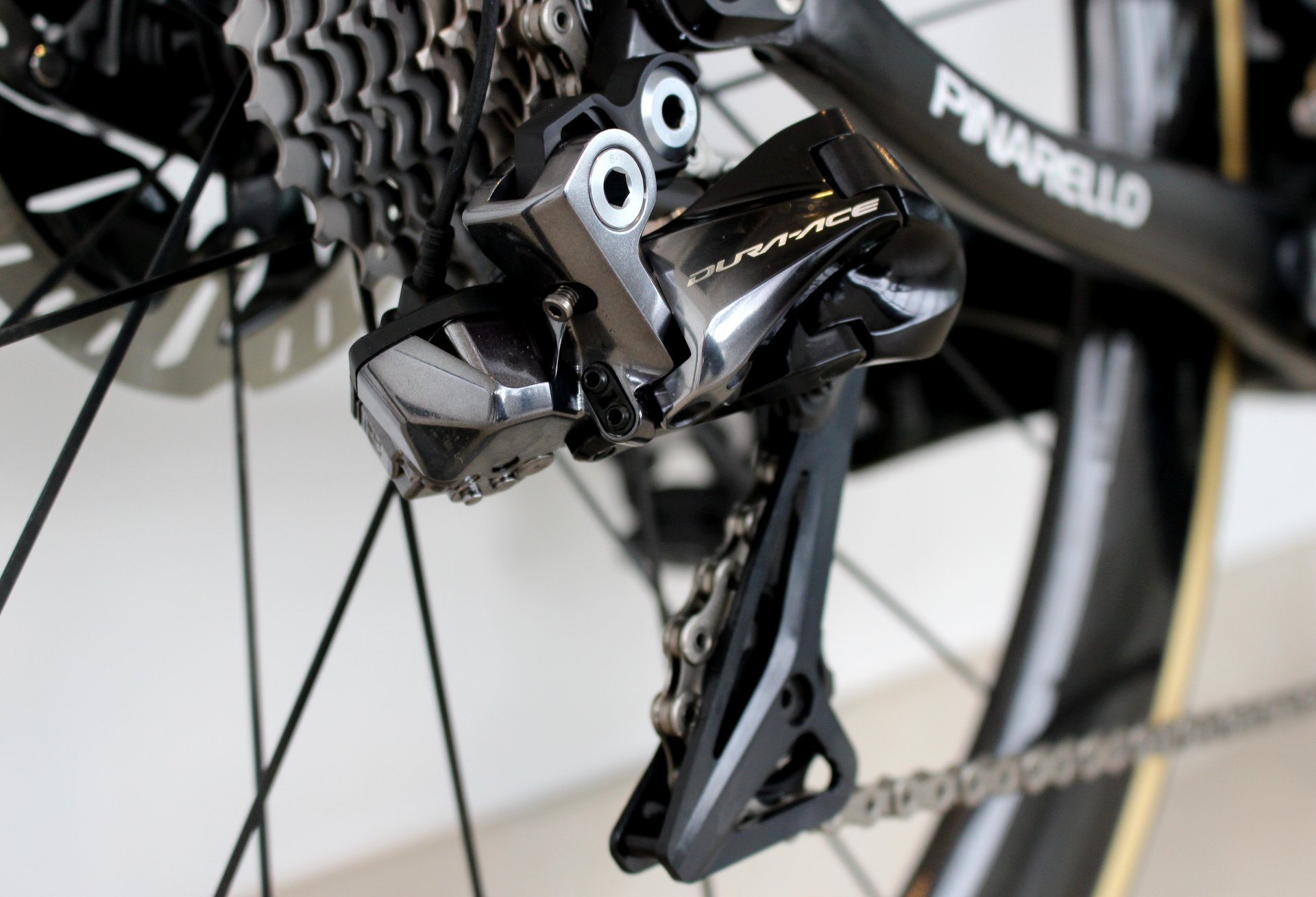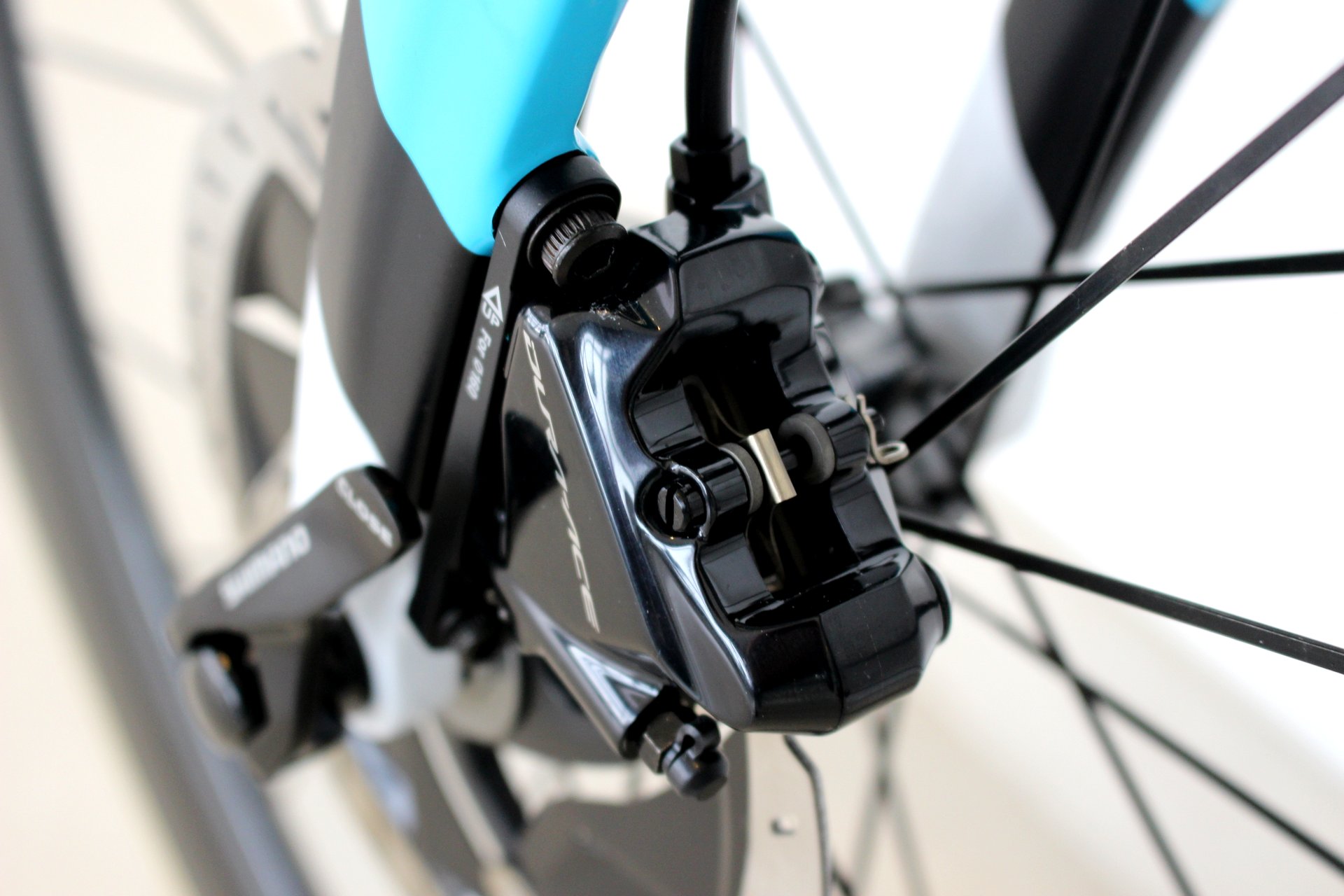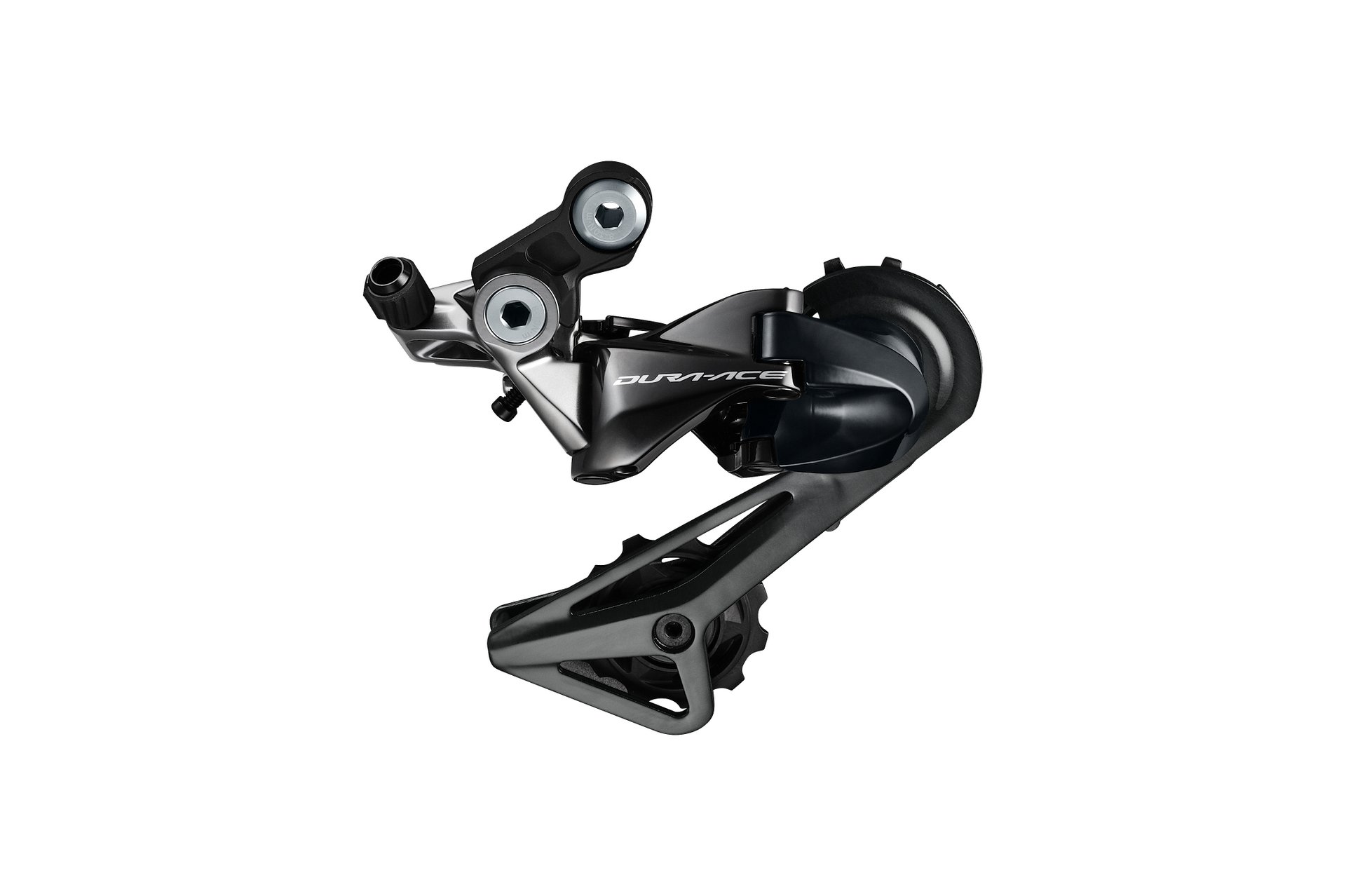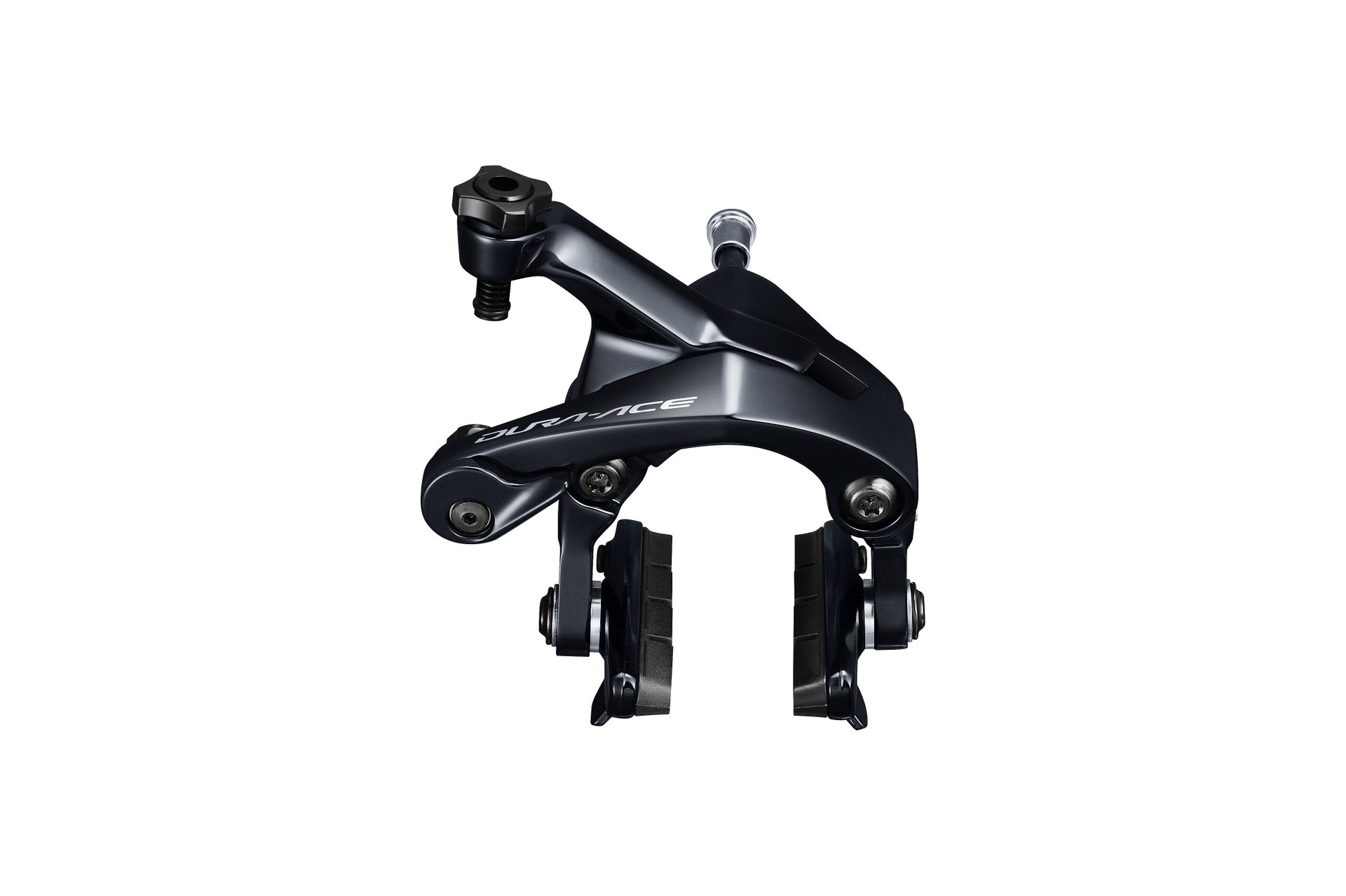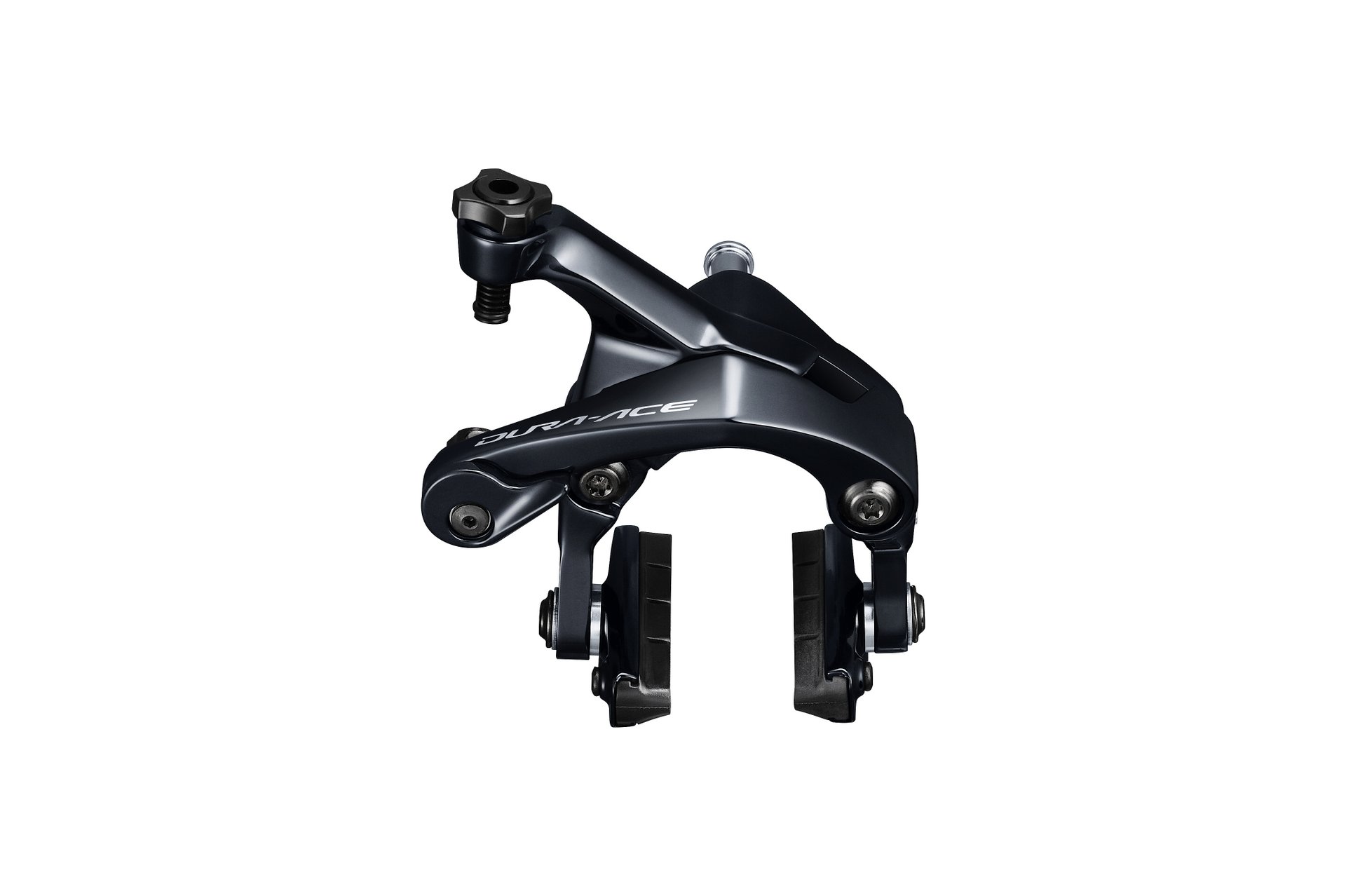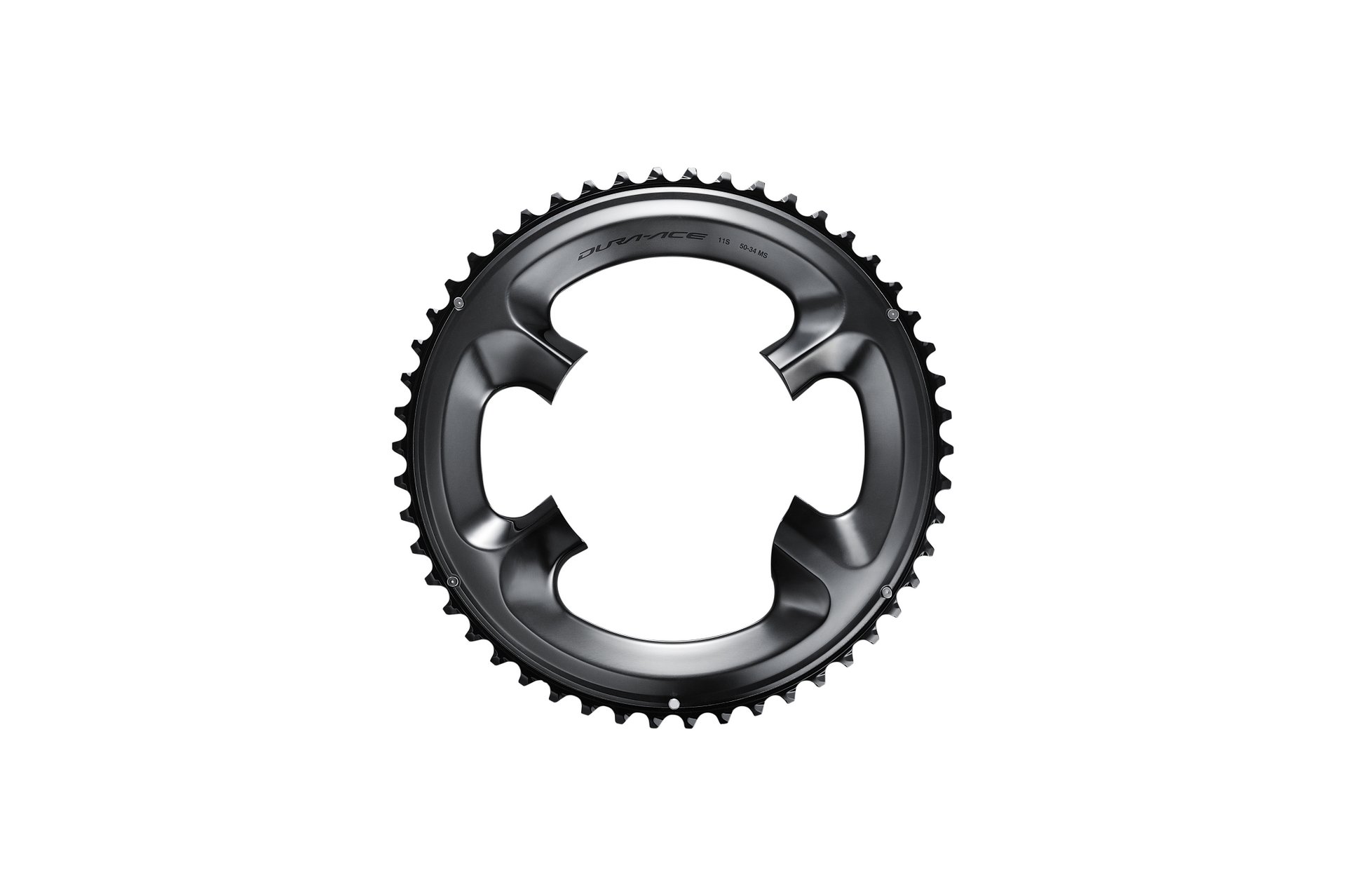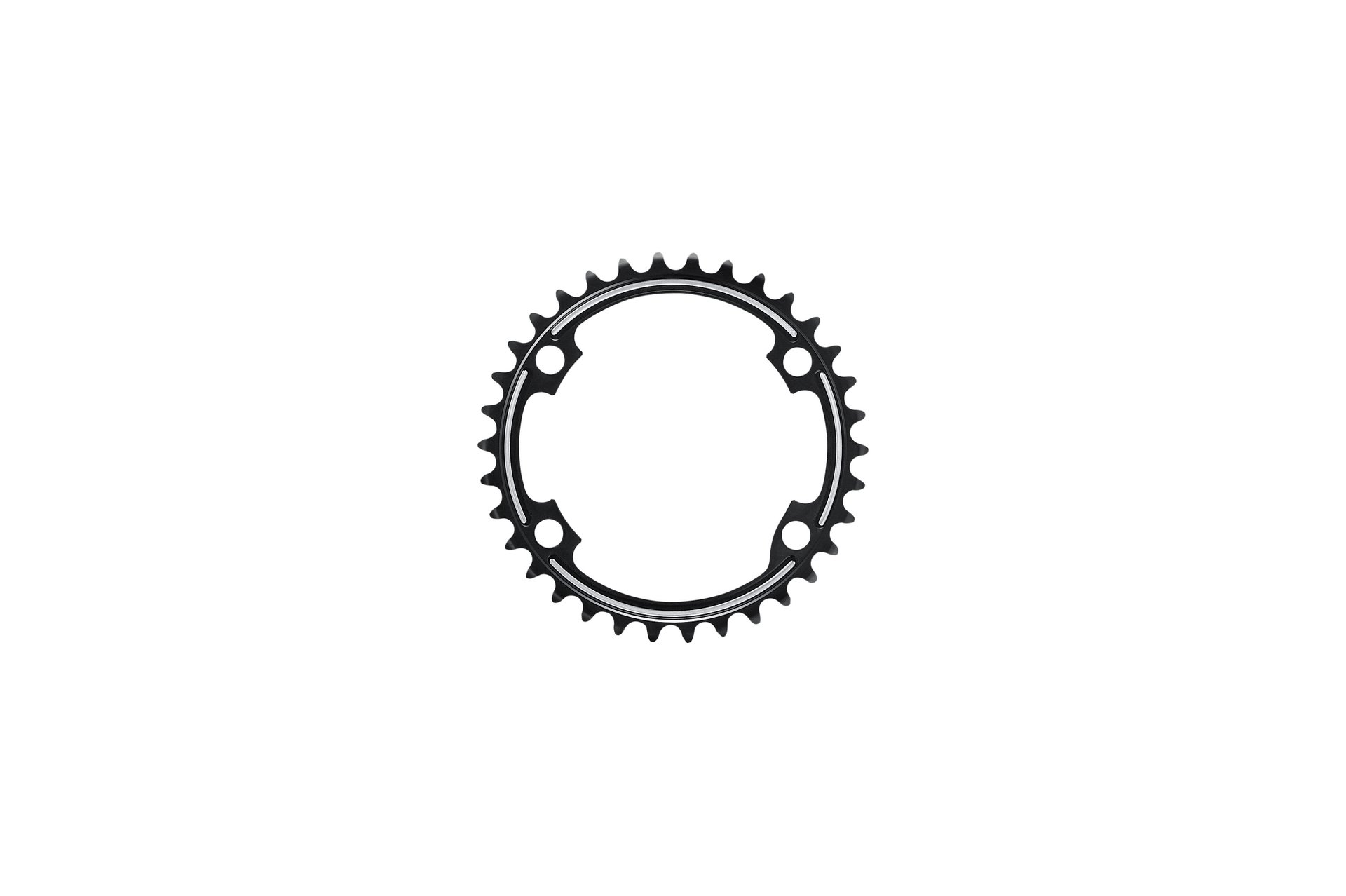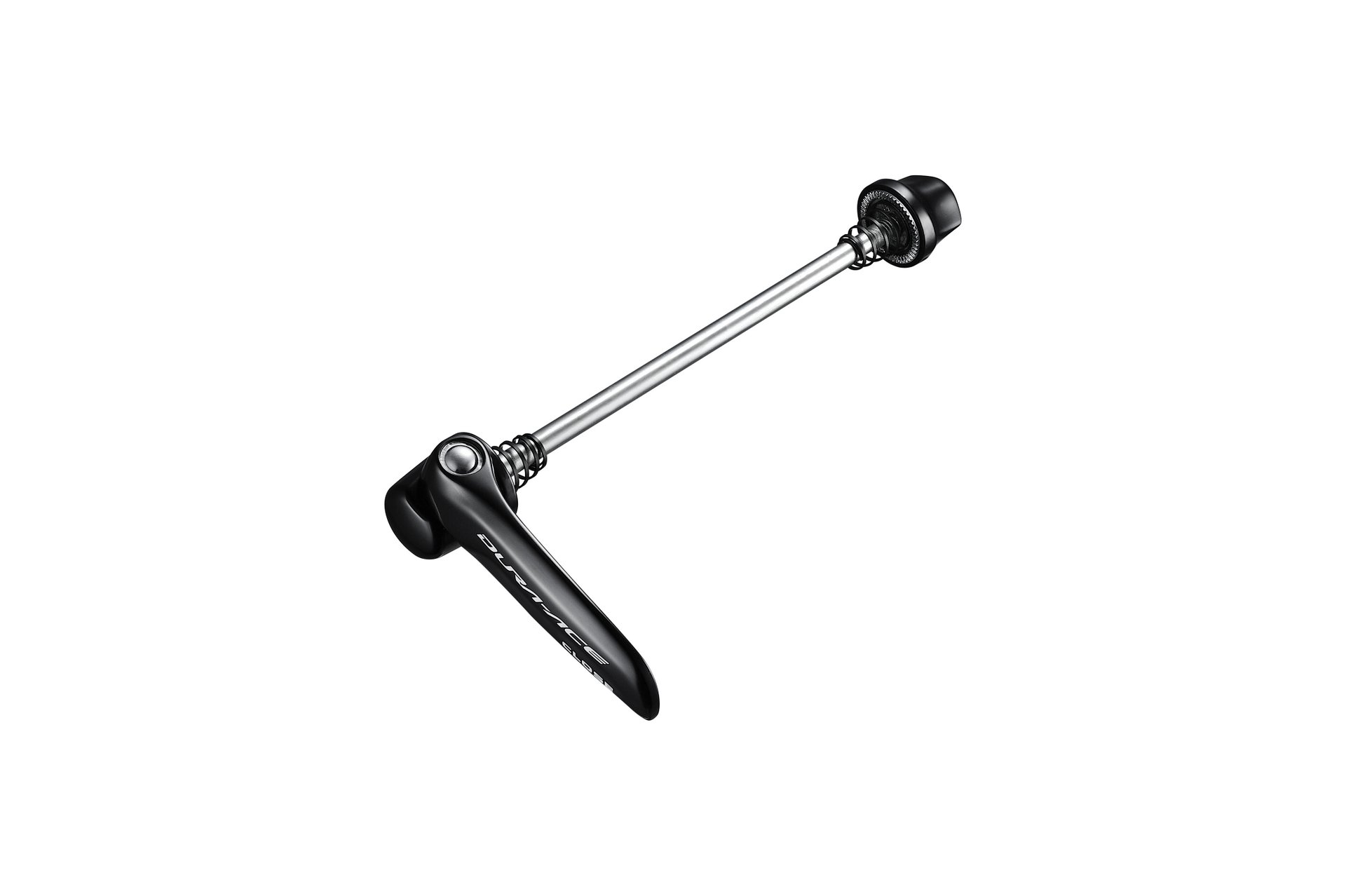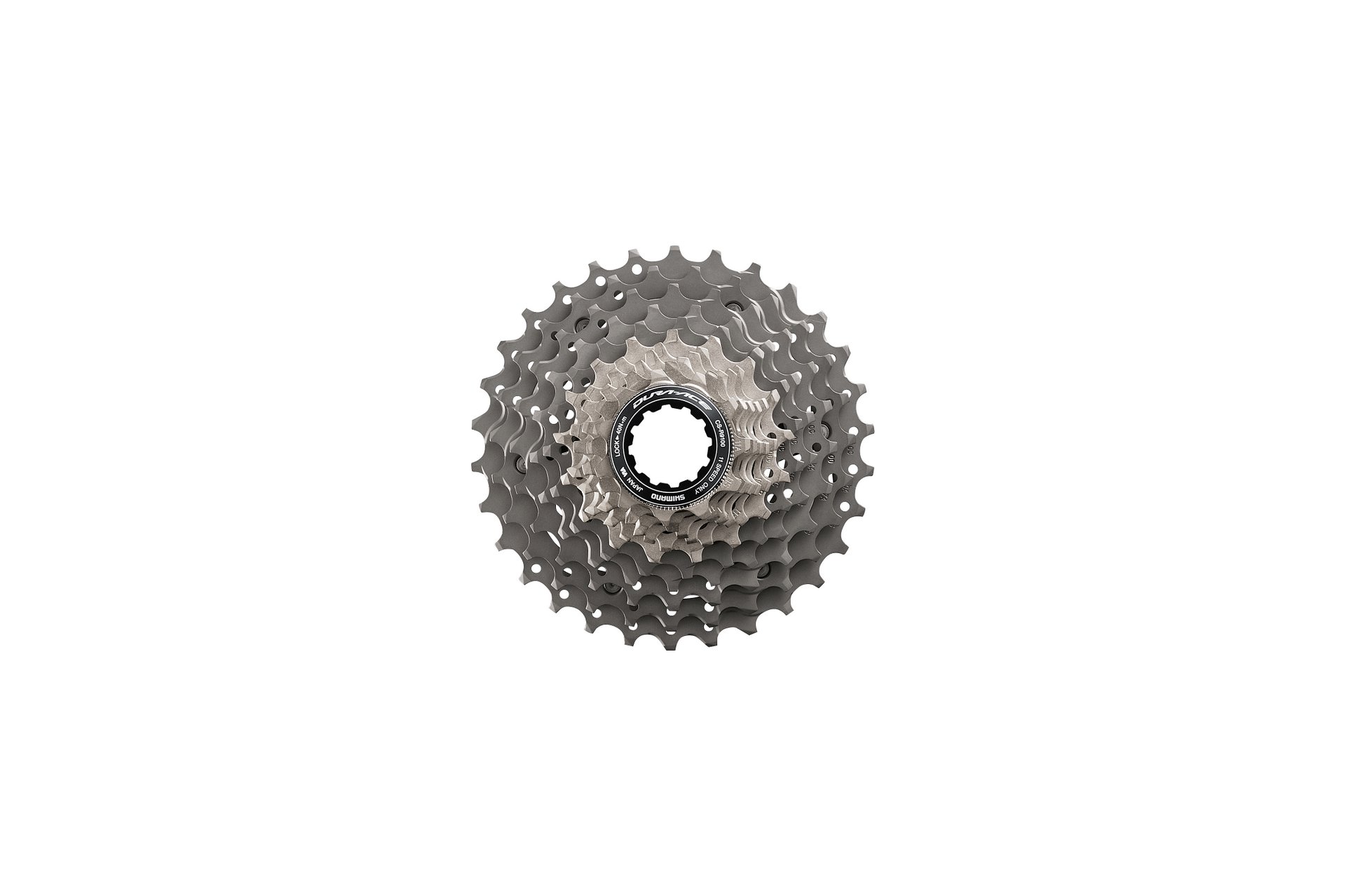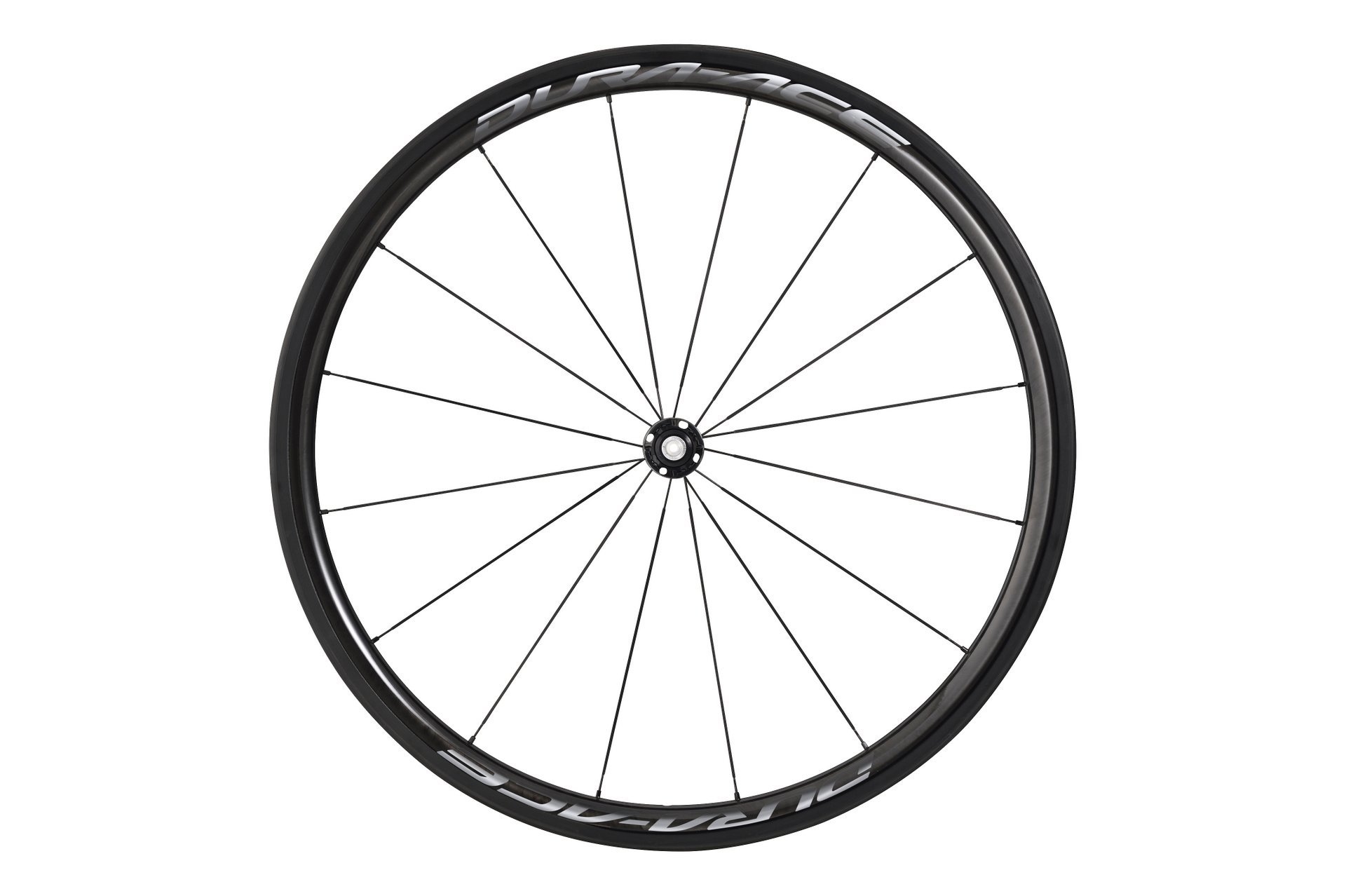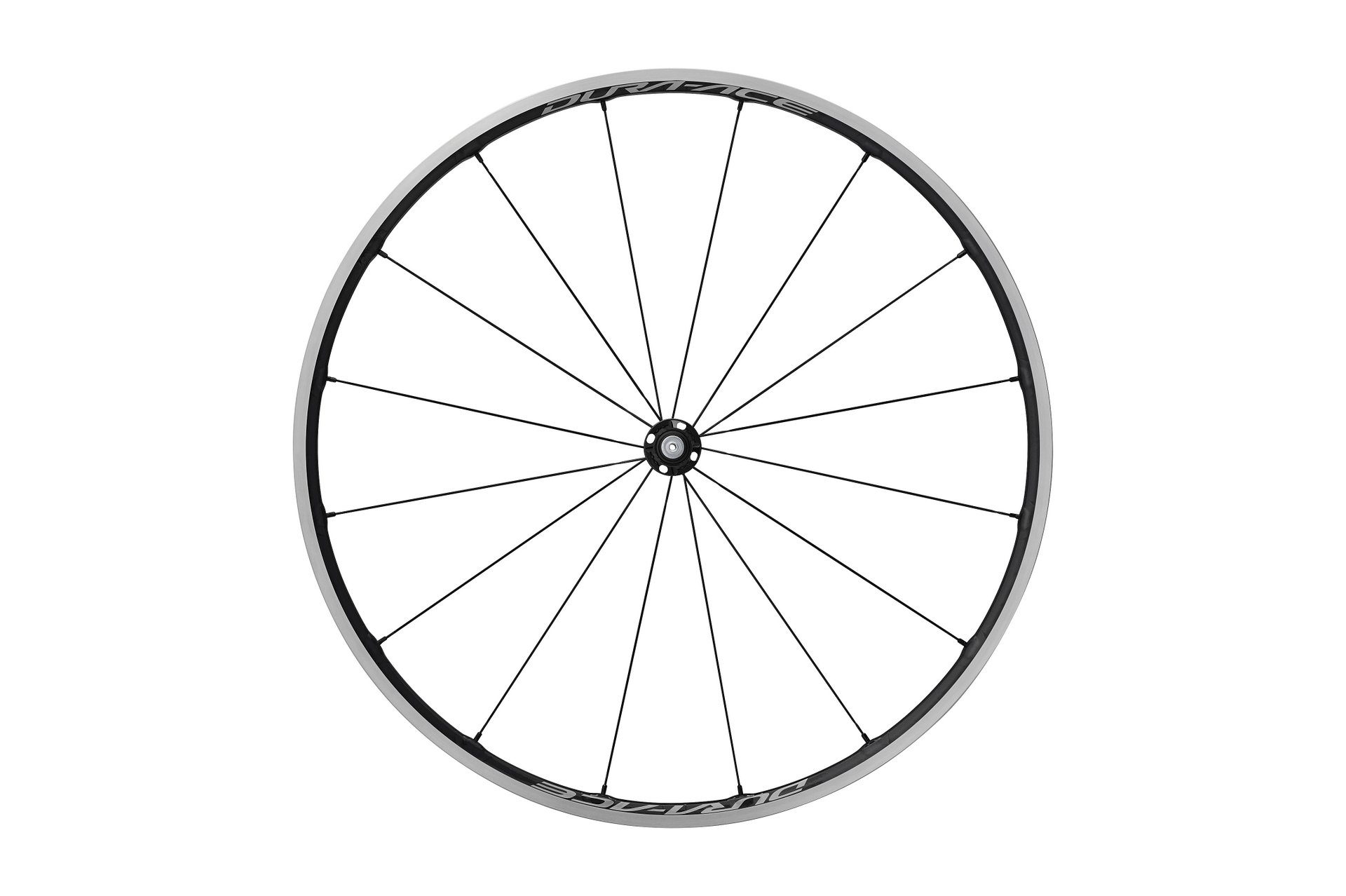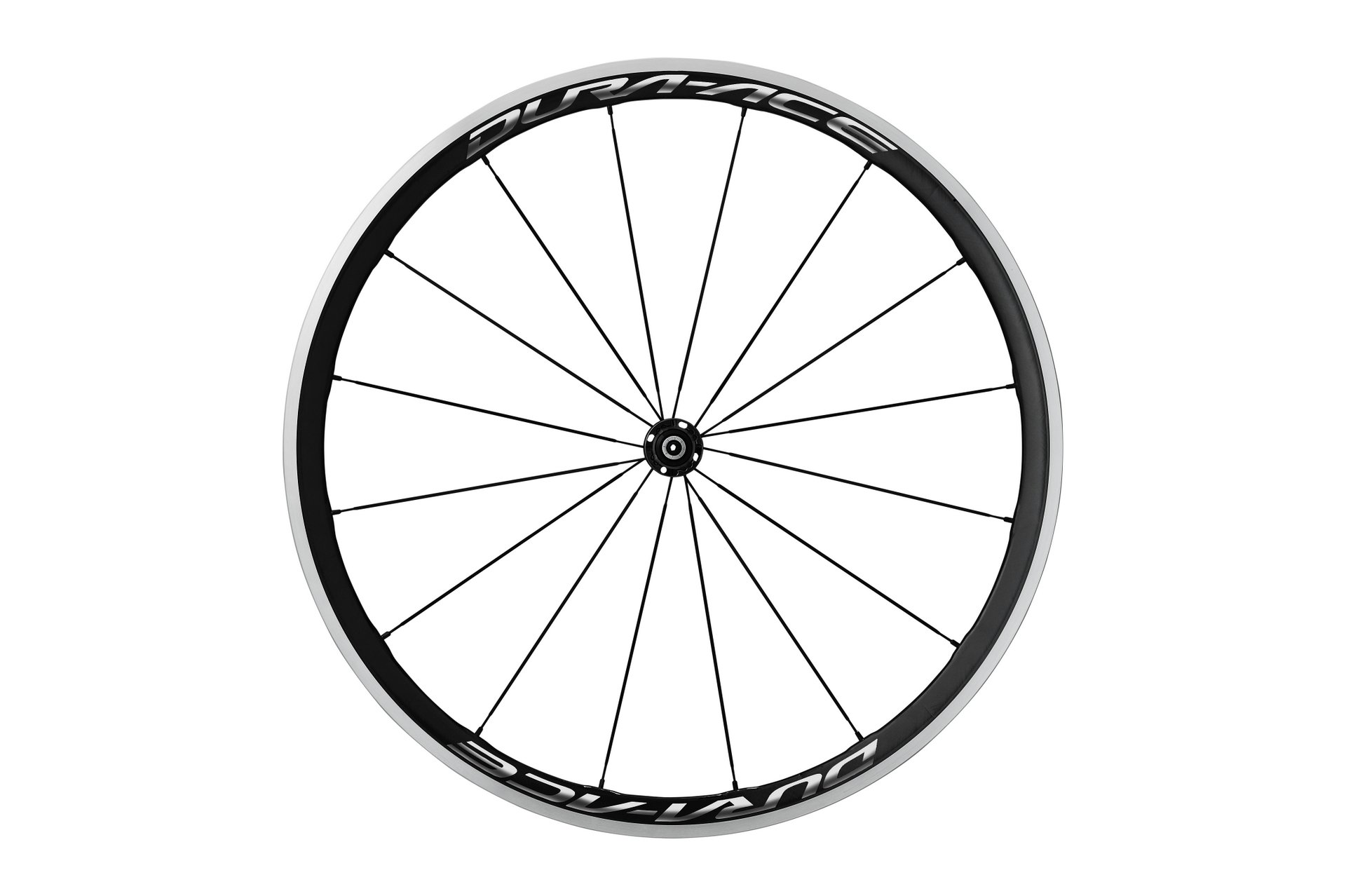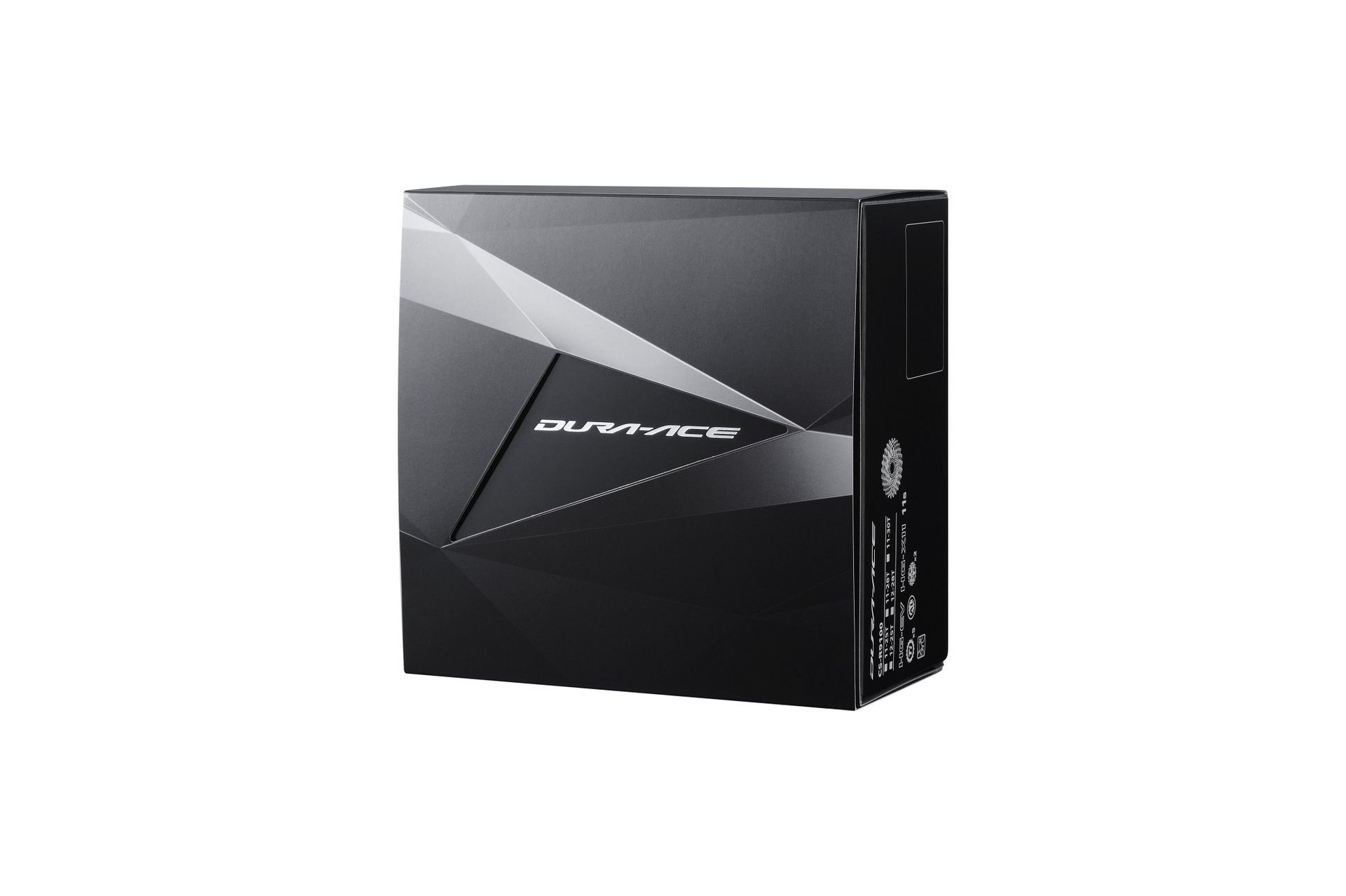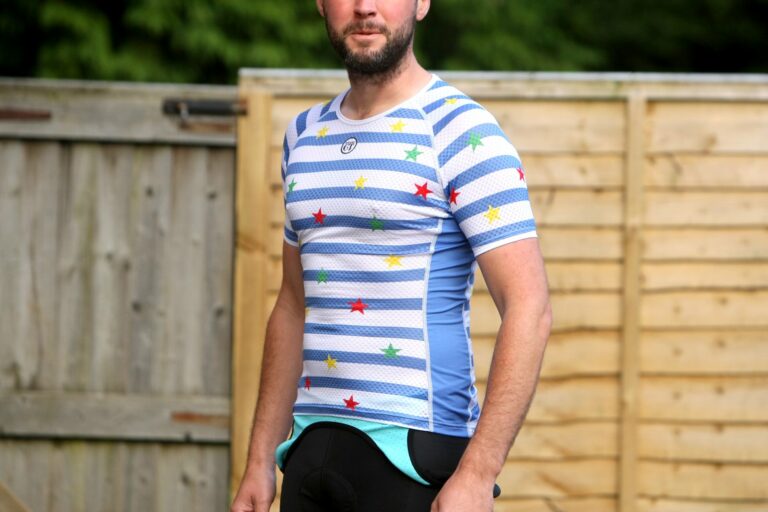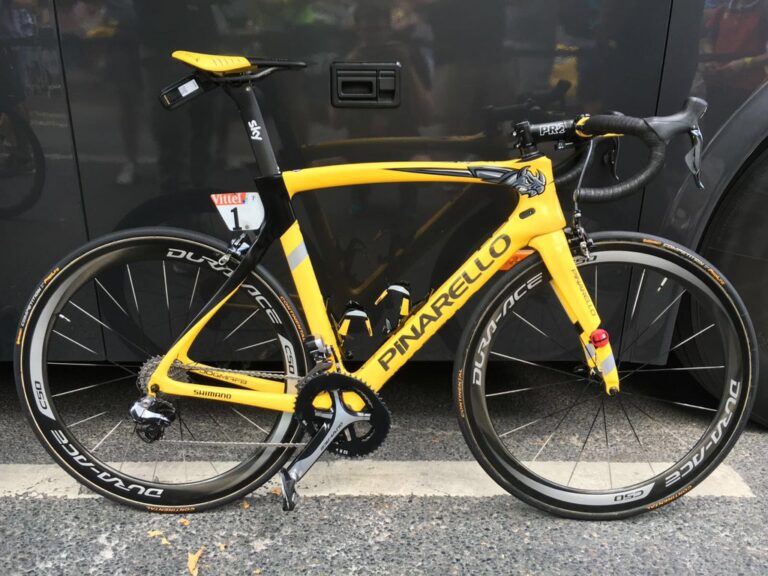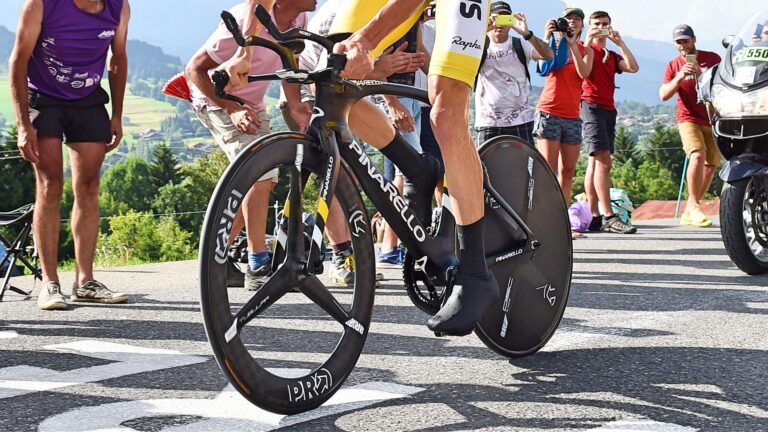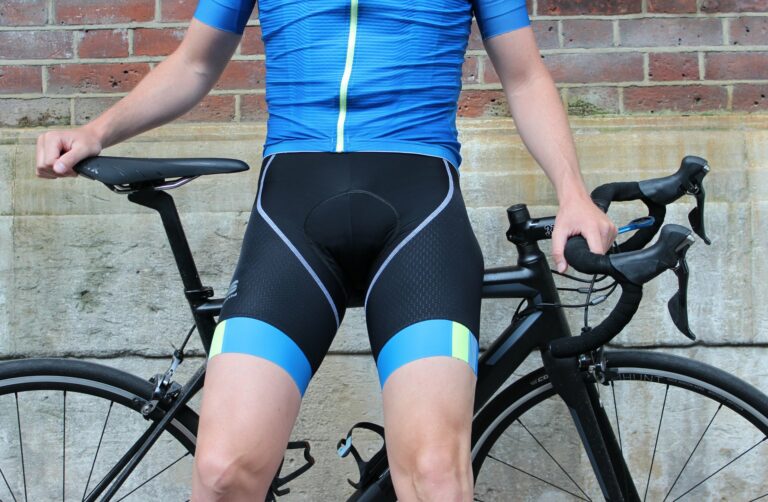Power up
The chainset is at the heart of the new R9100 gruppo and while Shimano have stayed loyal to the four-arm design first unveiled as part of the previous generation Dura-Ace, much has changed. First of all, it’s lighter (a theme across the groupset), albeit by only 7g, but, more significantly, the Hollowtech II crank arms are significantly bigger and have an asymmetric design, while the the outer chainring has been reinforced, in a move said to improve stiffness and shifting performance.
Even more noteworthy is the introduction of an integrated power meter. It doesn’t come as standard and instead Shimano will offer a Dura-Ace R9100 chainset with and without the power meter. ‘Accuracy’ is the key as far as Shimano is concerned, with the FC-R9100-P measuring left and right leg power separately, using strain gauges located inside either crank arm, while the power meter’s ‘brain’ sits within the crank spider.
Shimano call it one of the “lightest and cleanest [power meters] on the market” and say because the power meter is connected to the spider, the chainrings can be changed without affecting its accuracy.
“In the past Shimano developed the most advanced power crank I’ve worked with for use in a laboratory,” says Fred Grappe, head of performance at Francaise Des Jeux. “We took that technology and experience from the laboratory and transferred it into a system suitable for use in real world racing situations. Together with the Francaise Des Jeux team we’ve been testing it throughout the 2015 and 2016 seasons and we’re incredibly impressed with the breadth of powerful analytical information.”
The chainset will be available in five sizes – 50-34t, 52-36t, 53-39t, 54-42t and 55-42t – and with seven crank arm lengths ranging from 165mm to 180mm.
